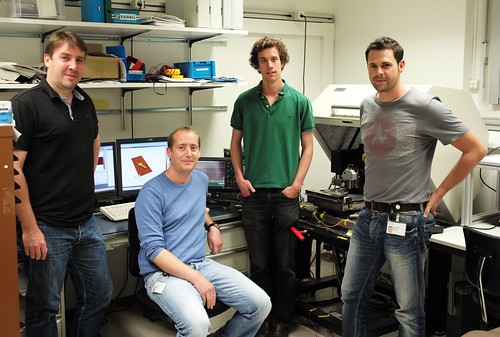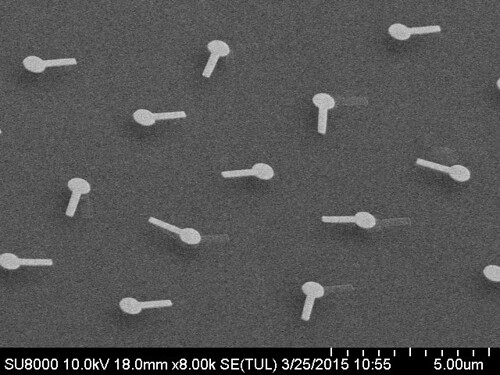
(U. Duerig is missing)
 | |
| Authors of the Science paper: A. Knoll, E. Koren, C. Rawlings, E. Lörtscher (U. Duerig is missing) |
 |
| SEM image showing several bearing devices pointing to different directions. |
Labels: AFM, IBM Research - Zurich, nanotechnology, superlubricity